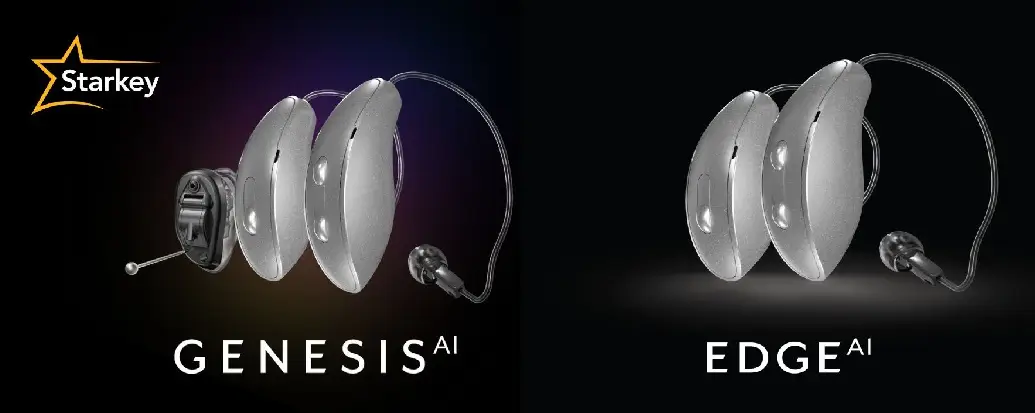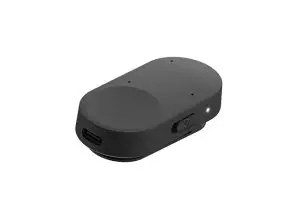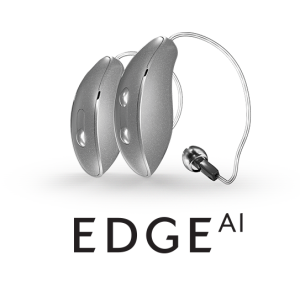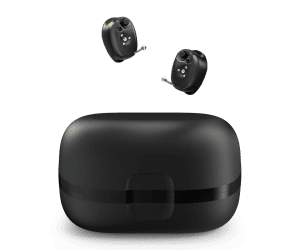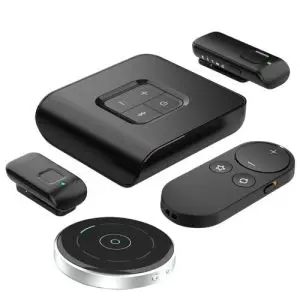Starkey Recently Released the New Edge AI – What Makes this Technology Different?
In the rapidly advancing world of hearing aids, companies like Starkey frequently release updated models. Promising the latest advancements in technology. However, for consumers and hearing care providers alike, it’s crucial to assess whether these updates truly offer significant improvements or if they mainly serve as a nudge to upgrade.
Let’s compare two of Starkey’s recent models: the Genesis AI (2023) and the Edge AI (2024). Although both models emphasize user comfort, sound quality, and AI-driven features, the differences may be more nuanced than they initially appear. In this blog, we’ll examine key updates in the new Starkey hearing aids and discuss what these mean for users.
Key Differences Between Genesis AI and Edge AI
- Processor and Neural Network
- Genesis AI: Equipped with the new Starkey Neuro Processor. This model introduced additive compression and a deep neural network (DNN) to enhance sound clarity and decrease noise. It emphasizes “Ear-Brain Technology,” designed to process sounds more like the human brain.
- Edge AI: While Edge AI continues with the Neuro Processor, it upgrades the processing speed and DNN efficiency. The G2 Neuro Processor in Edge AI offers increased dynamic range and lower noise floor for a more refined listening experience.
- Battery Life and Charging
- Genesis AI: Promises up to 42 hours on a single charge, setting a high standard in battery efficiency. It also introduced faster charging with the StarLink Premium Mini Chargers.
- Edge AI: Matches the battery longevity but uses more efficient processing. Allowing for better optimization and minimal power use across various modes and environments.
- Edge Mode+
- Genesis AI: Edge Mode+ was introduced here, allowing users to manually adjust sound settings for challenging environments.
- Edge AI: Edge Mode+ remains a core feature but is enhanced to offer more responsive, scene-specific adjustments. Including noise suppression and speech enhancement on demand.
- Sensory and Subconscious Sound Management
- Genesis AI: The Genesis model highlights Neuro Sound Technology. Focusing on reducing user listening effort and providing a more “transparent sound” through high-definition sound processing.
- Edge AI: Takes this further by creating an environmental “perceptual map” that responds dynamically to surroundings without user input. This can mean smoother transitions and fewer manual adjustments.
Data Driven Claims
The Starkey Edge AI does have some data-driven claims that suggest improved background noise management, though the difference may be subtle compared to the Genesis AI. Here are the main points Starkey emphasizes in their Edge AI literature:
- Improved Dynamic Range and Noise Floor: Starkey claims a 20 dB improvement in dynamic range and a reduced noise floor compared to earlier models, which can help with clearer sound, especially in noisy environments.
- Speech Presence Predictor (SPP): Edge AI includes an upgraded DNN-based Speech Presence Predictor that Starkey says identifies speech signals in noise 30% more accurately than the previous system. This allows the device to filter out non-speech noise more effectively, specifically reducing “speech-like noise” such as multi-talker environments.
- Edge Mode+ Performance: Starkey’s Edge Mode+ in the Edge AI reportedly enhances speech recognition by 11% over default settings, which can be particularly useful for challenging, high-noise environments. Additionally, Edge Mode+ improves signal-to-noise ratio (SNR) by approximately 1.13 dB, indicating better speech clarity in noisy conditions.
While these claims indicate incremental improvements, the exact user-perceived difference might still vary based on individual hearing environments and needs.
What These Differences Mean for Consumers
For many users, the differences between Genesis AI and Edge AI may not significantly impact their day-to-day experience. The enhancements in sound processing and DNN in Edge AI provide marginal improvements over Genesis AI’s already strong performance, especially for typical listening situations like conversations or small gatherings.
However, Edge AI could benefit users in particularly noisy environments due to the improved adaptive sound mapping and more efficient background noise management. For someone who frequently transitions between varied sound environments, these updates could add a noticeable convenience.
The Upgrade Dilemma: When Is New Technology Worth It?
Manufacturers often release “new” versions with incremental improvements. This approach can sometimes pressure consumers to upgrade despite having a perfectly suitable, recent model. Both Genesis AI and Edge AI deliver high-quality sound and reliability, but consumers should consider:
- Current Needs vs. Incremental Improvements: Edge AI’s marginally faster processing may not offer noticeable improvements for users satisfied with their Genesis AI experience.
- Lifestyle Compatibility: Edge AI’s advanced features are more beneficial for highly active users frequently exposed to varied sound environments. For others, Genesis AI remains more than adequate.
- Technology Plateau: Over time, technology improvements become incremental. Both Genesis AI and Edge AI mark high points in Starkey’s lineup, so upgrading from one to the other may yield only slight day-to-day enhancements.
Final Thoughts
The Genesis AI and Edge AI represent the latest in hearing technology, with features that make both strong choices. For current Genesis AI users, upgrading to the new Starkey hearing aids, the Edge AI, may offer only slight benefits unless you require advanced environmental adaptation features. Hearing aids are a significant investment, and choosing the model that best aligns with your lifestyle and listening needs can help you get the most value—without feeling pressured by the latest model release.
This practice of frequent “upgrades” speaks to a broader trend in hearing tech. Consumers should feel empowered to seek advice from hearing care professionals and avoid upgrading solely due to marketing. The choice between Genesis AI and Edge AI ultimately comes down to individual needs and the situations in which each user finds themselves.

